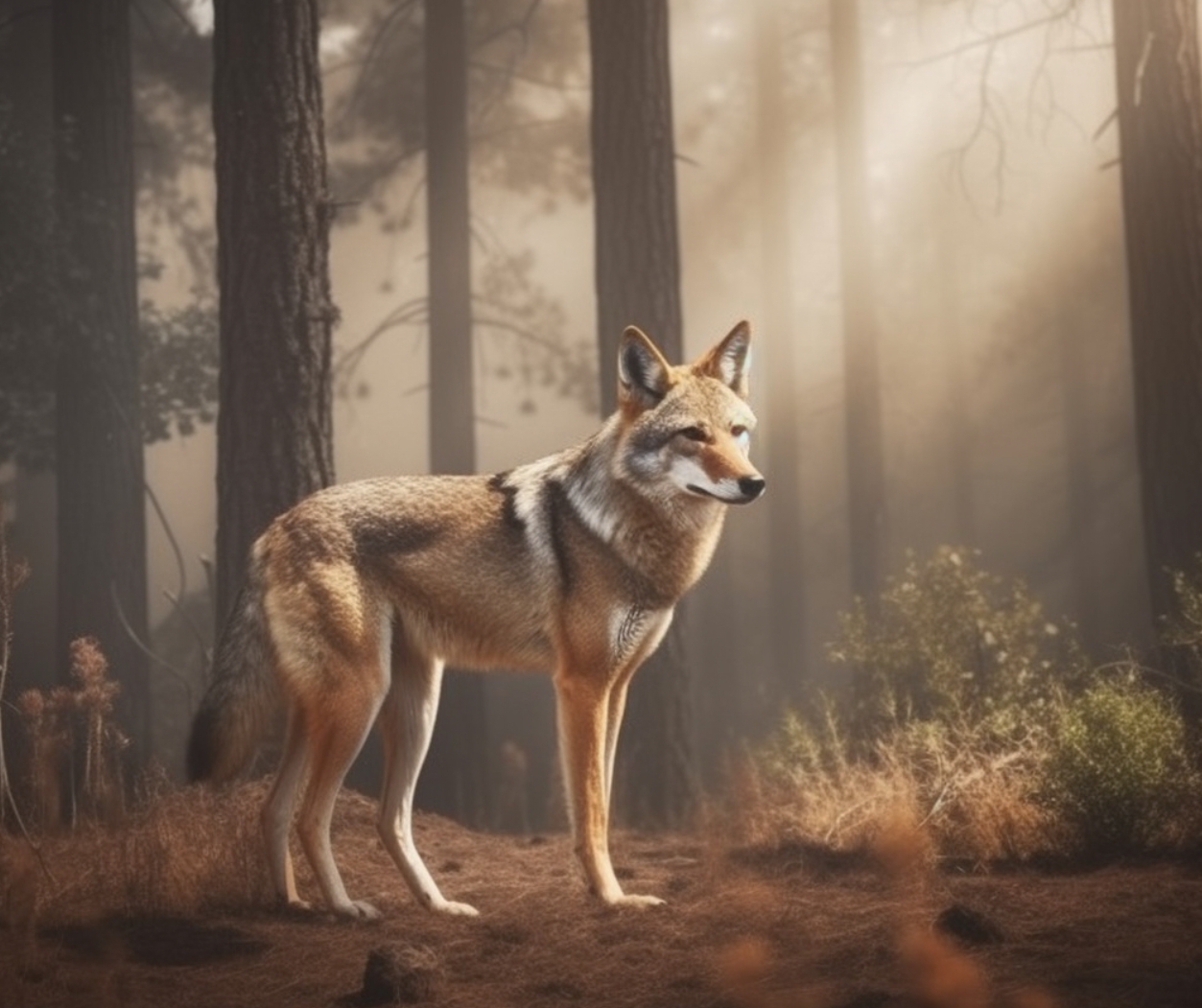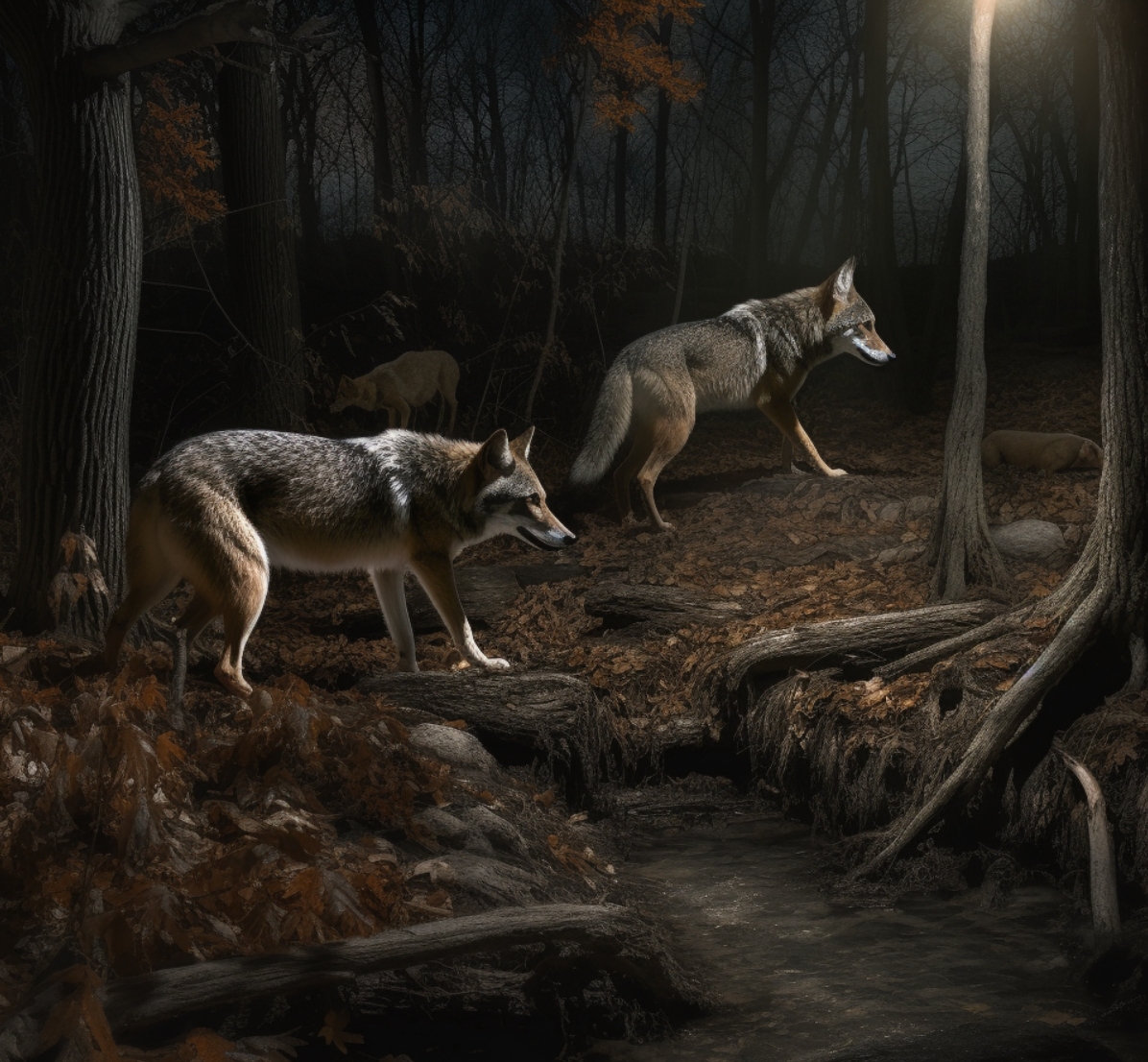Coyotes (Canis latrans) are incredibly adaptable animals that have made their mark in American folklore and wildlife. As they continue to expand their range and coexist with humans, it’s essential to learn more about these often misunderstood creatures. In this comprehensive guide, we will uncover various facts about coyotes, from their behavior and habitat to tips on coexisting with them safely.
Coyote Characteristics: What Makes Them Unique?
Contents
Coyotes are members of the Canidae family, which also includes dogs, wolves, and foxes. They are medium-sized animals, weighing between 20 and 50 pounds, with a bushy tail and pointed ears. Their coats vary in color, often a mix of gray, brown, and reddish hues, which helps them blend into their surroundings. Let’s explore some of their most notable features and abilities.
How High Can a Coyote Jump?
Astonishingly, coyotes can jump as high as 4 feet vertically and clear obstacles up to 8 feet in height. This leaping prowess makes it challenging to keep them out of fenced areas. To prevent them from entering your property, consider building a coyote-proof fence with a minimum height of 6 feet, topped with a coyote roller or an outward-facing extension.
Do Coyotes Come Out During the Day?
Although coyotes are primarily active during the night, they can also be spotted during the day, especially in areas where human activity is low. Urban coyotes have adapted to the presence of humans and may alter their activity patterns to avoid them.
How Fast Can Coyotes Run?
Coyotes are swift runners, reaching speeds of up to 40 mph. This incredible speed allows them to chase down their prey or escape predators quickly.
Coyote Behavior: Dispelling the Myths
There are many misconceptions surrounding coyotes and their behavior. By understanding the truth behind these myths, we can better coexist with these animals.
Will a Coyote Attack a Human?
While coyote attacks on humans are rare, they can happen, especially if the animal feels threatened or cornered. However, by taking appropriate precautions and maintaining a respectful distance, the risk of an encounter can be minimized.
How to Scare Coyotes Away
If you encounter a coyote, it’s essential to know how to scare them away. Make yourself appear larger by raising your arms, and use a loud, firm voice to yell at the animal. You can also throw small objects or use noisemakers to startle the coyote. Remember to maintain eye contact, but never corner or approach the animal.
How to Call Coyotes at Night
For wildlife enthusiasts or hunters, knowing how to call coyotes at night can be a thrilling experience. Coyote calls imitate the sounds of prey or other coyotes, attracting the animals to your location. Electronic callers and mouth calls are two popular methods, but it’s essential to practice and use them responsibly.
Do Coyotes Hunt in Packs?
Contrary to popular belief, coyotes don’t always hunt in packs. While they can form temporary alliances for hunting larger prey, they are generally solitary hunters, relying on their stealth and speed to catch smaller animals like rabbits and rodents.
Coyote Ecology: A Look Into Their World
Coyotes play a vital role in maintaining the balance of ecosystems. Let’s dive into some fascinating aspects of their ecology.
How to Get Rid of Coyotes on Your Property
If coyotes become a nuisance on your property, there are several humane ways to get rid of them. Eliminate sources of food and water, secure garbage cans, and remove any potential den sites. Consider using deterrents like motion-activated lights or sprinklers. If necessary, consult a professional wildlife control expert.
Why Do Coyotes Scream?
The distinctive scream of a coyote is a form of communication, often used to establish territory, locate pack members, or warn others of potential threats. Their vocalizations can range from yips and barks to eerie howls, depending on the situation.
Do Coyotes Hibernate?
Coyotes do not hibernate, remaining active throughout the year. They adjust their hunting habits and may form temporary packs to hunt larger prey during the winter months when food is scarce.
Predators vs. Coyotes: Who Wins?
While coyotes are skilled predators, they also face threats from other animals. Some of their natural predators include wolves, mountain lions, and bears. Coyotes rely on their speed, agility, and keen senses to avoid these larger predators.
What Eats Coyotes?
Coyotes are occasionally preyed upon by larger carnivores like wolves, mountain lions, and bears. These predators are higher up in the food chain and may eat coyotes if the opportunity arises.
Can Coyotes Be Domesticated?
While coyotes share many similarities with domestic dogs, domesticating coyotes is not recommended. They are wild animals with strong instincts and are less likely to form the same bond with humans as domesticated canines. It’s essential to respect their wild nature and maintain a safe distance.
In conclusion, understanding the facts about coyotes can help us appreciate their role in the ecosystem and coexist with them more harmoniously. By learning about their unique characteristics, behaviors, and ecological impact, we can foster a greater appreciation for these remarkable animals and work together to promote their conservation.
Frequently Asked Questions About Coyotes
To help you better understand these fascinating creatures, we’ve compiled a list of frequently asked questions about coyotes.
1. What is the average lifespan of a coyote?
Coyotes have an average lifespan of 6-8 years in the wild, although they can live up to 14 years in captivity.
2. What do coyotes eat?
Coyotes have a diverse diet, consisting mainly of small mammals, such as rabbits, rodents, and squirrels. They are also known to eat birds, insects, and fruits. In urban areas, they may scavenge from garbage cans or prey on pets.
3. Are coyotes dangerous to pets?
Yes, coyotes can pose a threat to pets, particularly small dogs and cats. To protect your pets, keep them indoors during the night, supervise them while outside, and secure your yard with a coyote-proof fence.
4. Do coyotes mate for life?
Coyotes form strong pair bonds and are generally monogamous, staying with the same mate for several years. However, if one mate dies or cannot reproduce, the surviving coyote may find a new partner.
5. How do coyotes communicate?
Coyotes communicate using a combination of vocalizations, body language, and scent marking. Their vocalizations include barks, yips, howls, and screams, which convey different messages depending on the situation.
6. Where do coyotes live?
Coyotes are highly adaptable and can be found in a wide range of habitats, from forests and grasslands to urban areas. They are native to North America and have expanded their range significantly over the last century.
7. How can I tell the difference between a coyote and a wolf?
Coyotes are smaller and lighter than wolves, with a more slender build and a bushy tail. Their ears are also larger and more pointed, while their snouts are narrower. Wolves have a more massive, muscular build, and their fur is typically thicker and more greyish in color.
8. Are coyotes protected by law?
Coyote protection laws vary by state and country. In some areas, coyotes are considered game animals and can be hunted or trapped during specific seasons with the appropriate licenses. In other places, they may be protected or have specific regulations regarding their management. Always check your local laws and regulations before attempting to control or remove coyotes from your property.
9. Can I keep a coyote as a pet?
It is not recommended to keep a coyote as a pet, as they are wild animals with strong instincts and are less likely to form the same bond with humans as domesticated canines. In many jurisdictions, it is also illegal to keep a coyote as a pet without the proper permits.
10. How can I learn more about coyotes and their behavior?
To learn more about coyotes, consider reading books or scientific articles about their ecology and behavior, watching documentaries, or attending workshops and seminars hosted by wildlife organizations. Remember to keep a respectful distance from wild coyotes and observe their behavior responsibly.





